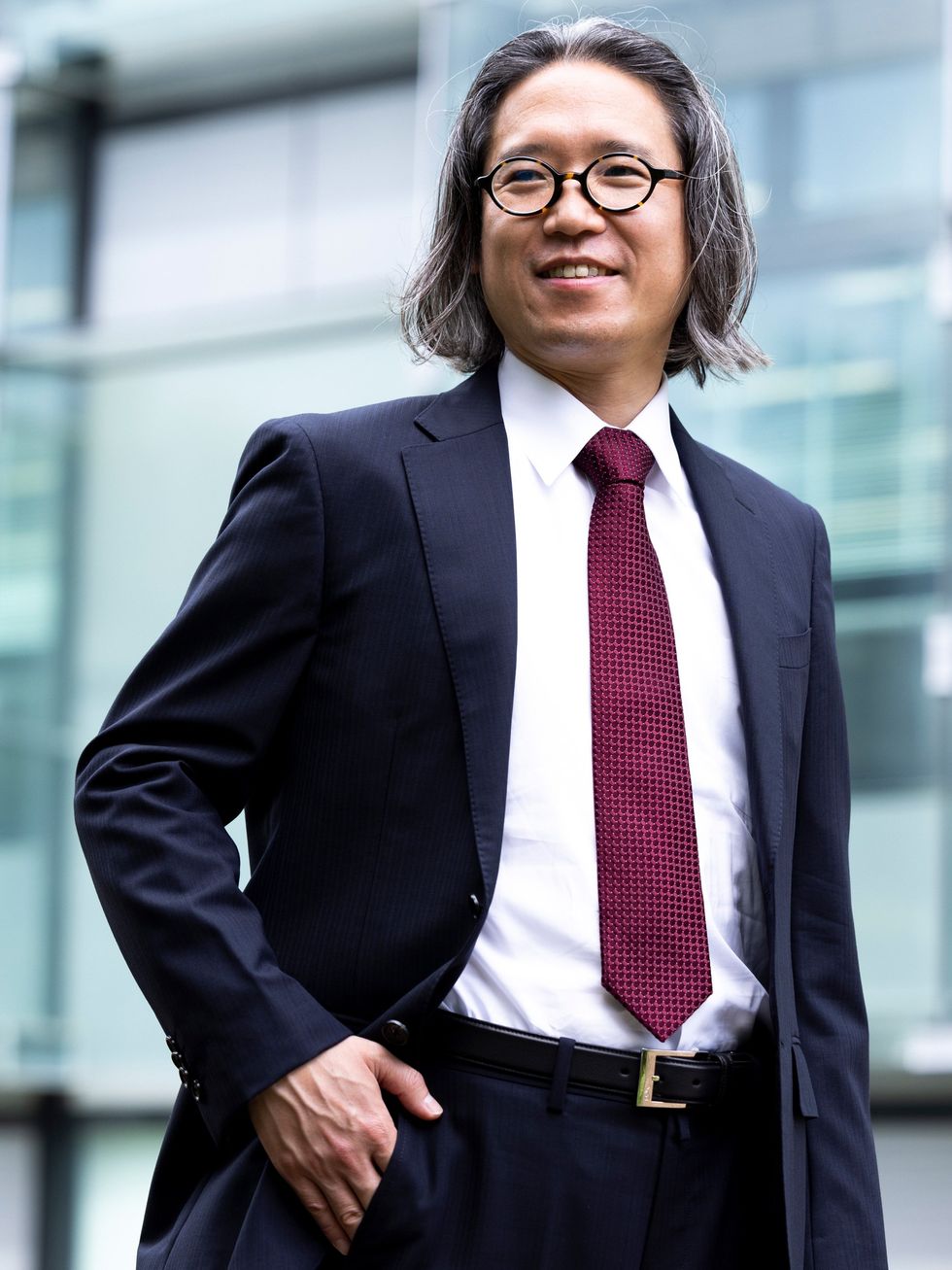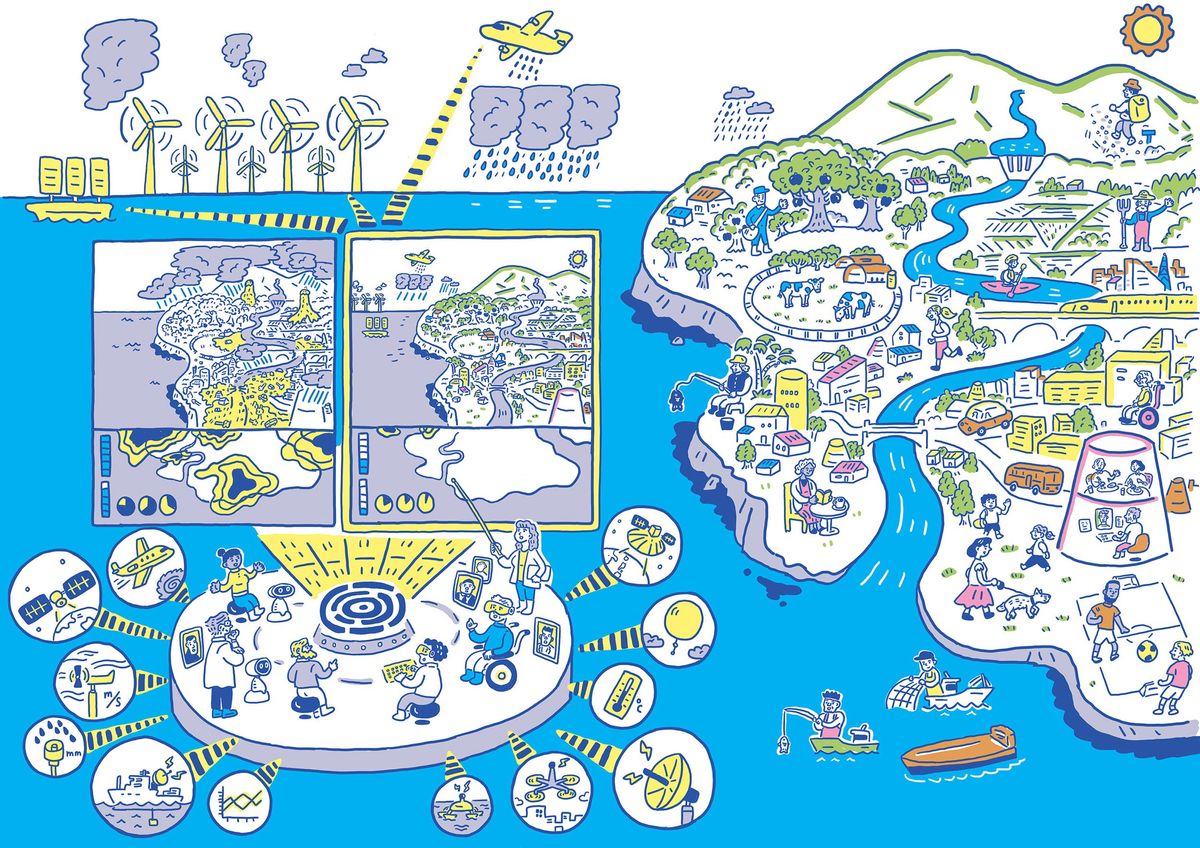Japan’s Moonshot Research and Development Program is a large-scale, long-term, multitargeted national endeavor that aims to make extraordinary advances in nine fields of research. These include ultra-early disease prediction and intervention, creating a sustainable global food supply by exploiting unused biological resources, and realizing self-learning autonomous robot helpers. The inspiration for these Moonshots is to help the country deal with the pressing concerns of a rapidly aging and shrinking population, climate-change disruption, and natural disasters. Launched in 2019 and set to end in 2050, Japan’s nine Moonshots have to date garnered some 195 billion yen (about US $1.3 billion) in seed money.

As but one example of the industry and ambition harnessed in these programs, IEEE Spectrum spoke with Takemasa Miyoshi, program director of Moonshot 8, which is targeting the modification and control of extreme weather to reduce the damage it causes. Moonshot #8 itself comprises eight related projects. Three of these constitute the core of the program and seek, over the next twenty-five years, to develop a theory for and then the meteorological means to carry out modification and control of weather events like typhoons and torrential rains.
Miyoshi’s research background is in data assimilation relating to chaotic systems such as the weather. As director of Moonshot 8, he is overseeing 270 researchers and students working on the eight projects, all of which he is carrying out while maintaining his role as leader of the Center for Computational Science, Data Assimilation Research Team at Riken, Japan’s flagship national research center.
You continue to work as a team leader at Riken while also overseeing hundreds of researchers involved in the various Moonshot 8 projects. How are you keeping on top of the program?
Takemasa Miyoshi: Well, I have eight project managers managing the projects and hiring researchers. Also, two deputy directors are helping me, and there is a group of 10 outside experts from academia providing advice and assistance.
To monitor progress and to coordinate the research, I hold online meetings monthly with the deputy directors, managers, advisors, and researchers. Then, at least once a year, I and the deputy directors and some advisors visit each project site and have face-to-face meetings with everyone. We also conduct an annual evaluation of the programs with the help of the advisors. And we hold a yearly get-together where everyone concerned attends to encourage mutual understanding and good communications.
“We are focusing on computer simulations to study the feasibility of controlling the weather. We are testing what kind of small inputs into the atmosphere might lead to significant change.”
—Takemasa Miyoshi, Japan’s Moonshot 8 program director
Moonshot 8 got underway 15 months ago. What have you accomplished so far?
Miyoshi: We spent the first several months developing research plans and questioning how realistic they might be. Now, before we even think about doing any real-world experiments, we are focusing on computer simulations to study the feasibility of controlling the weather. We are testing what kind of small inputs into the atmosphere might lead to significant change in, for example, the intensity of tropical cyclones. So the first three years of the core research will be spent on testing the feasibility of our main goals.
As for the five nonprimary projects, each one is focused on just some aspects of the core goals, certain elements of what will be necessary over the next 25 years to achieve the main objectives.”
Is there an example of such a nonprimary project that has advanced over the past year?
Miyoshi: For instance, one project is focused on observing the intensity of typhoons, something difficult to do. Yes, we can observe tropical cyclones from space using satellites. But the images tell us only roughly their intensity. Without actual measurements, it is hardly more than a guess.
So this project has developed an ocean drone that can go into the cyclone and try to measure actual ocean surface pressure and the ocean surface wind, which are essential for monitoring a cyclone’s intensity. The researchers tested two or three prototypes last year. Now they are making improvements based on the results.
“Control theory is already used to control the orbit of rockets and satellites.... We’d like to apply this same idea to weather systems.”
—Takemasa Miyoshi
What is the basis of weather control theory?
Miyoshi: Control theory is already used to control the orbit of rockets and satellites. By measuring such factors as a rocket’s current location and velocity, we can predict where it will go over time. And we can monitor and assist it to reach that location by turning on or off its engine. We’d like to apply this same idea to weather systems.
How might you do this?
Miyoshi: To predict a rocket’s location, you only need a few coordinates in three-dimensional space, if you know its velocity. The calculations are not hard. Predicting the weather is far more complicated because of the millions of variables. The equations used are also complex and difficult to solve. But with computers, we can define the variables in a current weather state, and with the right equations, we can predict future states.
Because we’re concerning ourselves only with disaster-related weather—prolonged torrential rains and typhoons—we are focusing on computer simulations needed to study the atmospheric sensitivities involved in such extreme weather. By understanding these sensitivities, we believe we will be able to devise limited inputs into the atmosphere to influence them—just as radio signals sent to turn on or off a rocket’s motors can control it. That’s the theory. What’s missing is the “engine.”
What could be used to create such an engine?
Miyoshi: One well known method already being used is cloud seeding to modulate the formation of clouds. Heavy rain is caused by clouds. If we can understand when and where a particular cloud system is most sensitive, we can then test the feasibility of limited inputs like cloud seeding to bring about changes that could, for instance, lead to the mitigation of heavy rains.
“We will also need to hold discussions and come to some kind of international agreement based on science for governing such limited changes to the weather.”
—Takemasa Miyoshi
Another possible method is to use ships, large ocean vessels, with some means of absorbing wind energy on the ocean surface—ships with specially designed sails, for example. The energy could be transferred to propellers at the bottom of the ship and dissipated into the ocean. This could weaken the force of the ocean surface wind, and so potentially weaken the force of a typhoon.
We plan to carry out various small-scale field experiments to study the feasibility of these ideas and others in 10 years.
China and the two Koreas might view such weather control negatively, given their close proximity to Japan.
Miyoshi: This is why we first must be able to accurately predict the consequences of our action. We will also need to hold discussions and come to some kind of international agreement based on science for governing such limited changes to the weather, and for designating what situations they will be permitted. This is why all three core projects include social scientists who are considering how to gain legal, economic, ethical, and social acceptance for these technologies.
Twenty-five-years from now when the program is winding down, what are the minimum advances you would expect to achieve?
Miyoshi: At the very least, a better understanding of the atmosphere. This is essential for advancing the basic science. Better understanding can have a lot of impact on, for instance, improving weather prediction, particularly in cases of weather-related disasters. There are no atmospheric studies being carried out from the point of view of weather control. So we are creating something new that will lead to new findings that will help us control part of some specific types of weather.
- Engineers: You Can Disrupt Climate Change ›
- It's Hurricane Season: Do You Know Where Your Storm Is? - IEEE ... ›



